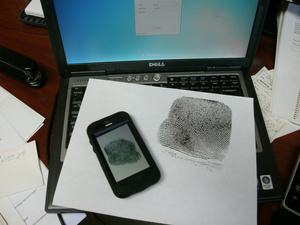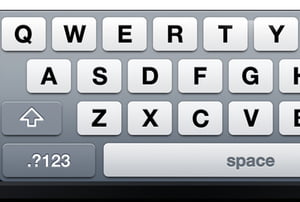This review is not to suggest that these systems replace the standard laptop computer, but rather to be used in conjunction with or as an extension of the laptop. As a retired law enforcement professional, I now teach Criminal Justice (CJ) courses for a local university and was able to “kick the tires” on an iPad to see how it could be applied in the classroom and what relevance it might bring to the Criminal Justice practitioners. Listed here are some of my findings, which I hope are useful to others looking to leverage technology in the field of Law Enforcement. In addition to my review I would recommend law enforcement officers (LEO’s) active in law enforcement agencies (LEA’s) read or review the following articles as well:
Law enforcement-inspired iPhone and iPad apps will also work on Apple’s new tablet
http://www.policeone.com/police-products/communications/articles/2002211-Law-enforcement-inspired-iPhone-and-iPad-apps/ it outlines 15 Law Enforcement Apps – also found at (http://tacticalpants.com/blog/police-iphone-apps/)
Police iPhone Appshttp://www.policeiphoneapps.com/
MORIS (Mobile Offender Recognition and Identification System). A police department in Brockton, Massachusetts is matching photos of suspects with a database in development by statewide sheriff’s departments. http://www.cultofmac.com/police-use-facial-recognition-iphone-app-to-id-perps/47059
Three iPad Strengths (the pros)
The iPad has a number of qualities that could be expounded on, but for the purposes of brevity I have limited my observations to the following three.
1. The first big”+” that I noticed was the 10+hours of battery life. Unlike our laptop computers, which once they are detached from a power source typically last not more than 2-4 hours at best, the iPad has a robust amount of battery power between charges. The iPad, like the iPhone, powers up and on quickly.
2. The iPad has a variety of applications which are free or nearly free ($.99) which can be adapted for use in a variety of industries. The Google Earth application is free and will provide fairly current street-view imaging. The integrated “Maps” application will provide a real-time location and directions. The “Peak” application can provide the user with the names, distances and locations of nearby mountainous areas.
3. The specific applications identified thus far as valuable for law enforcement practitioners include: The Dragon Dictation application, which allows for notes to be recorded and almost instantly converted to text (I successfully used a less intuitive version of this application in crime scene investigations). The USB Disk application allows virtually any LEO hard-copy information, reports, statements, etc., to be uploaded for later reading into the iPad. The Documents 2 Go (as well as other) applications allows for the report templates to be uploaded, completed, saved or emailed. The HP iPrint (and similar applications) allows for the wireless printing of documents.
The iPad Weaknesses (some cons)
Rather than simply iPad bash, I took an either/or approach with regard to how the iPad might measure up to most standard laptop computer systems used in Law Enforcement.
iPad vs. Laptop
Current iPad models do not have external storage media. Though Cloud computing may overcome this shortfall.
vs.
Most laptops have USB ports as well as CD/DVD burners.
Current iPad models do not have integrated camera. However, camera kits are now available for the iPad.
vs.
Some laptops have embedded camera on the lid.
Current iPad O/S are not designed to interact with legacy or customized LEA Report Management System applications.
vs.
Most laptops work with Microsoft applications or have updates
Current models of iPad are not yet ‘Ruggedized’ as a standard.
vs.
Toughbook and other Ruggedized systems already exist for the laptop.
Current iPad and iPhone technologies have not yet been completely embraced by the law enforcement community.
vs.
Laptop computers are considered a standard piece of equipment in many LEA’s, which require only basic training to operate.
Under Development:
At the time of this article there were several LE focused iPhone and iPad applications including found, including:
Auto VIN Decoder – returns make, model, year etc., for input VIN number
Field Contact – photo and field contact details, saved and/or emailed instantly for distribution to colleagues
California Law – all California Codes – instant search (tip – deactivate the codes that you don’t use every day to save RAM)
Scanner 911 – listen to any local public safety channels that are distributed on the Internet.
Call2 Police– finds the local PD phone number based on your GPS location
Dial Zero – gets you to customer service numbers without going through “Press 1 for …” “now Press 2 for….
Conclusion:
As innovations continue to be made with the iPad and similar mobile devices, law enforcement should expect applications in biometric capability to become more refined, gain wider general and routine use and become a common piece of equipment for the law enforcement professional.
For those interested in ‘bending technology to your will’ you may find the iPhone and iPad a viable option to augment many daily law enforcement investigation, patrolling and reporting needs, and supplementing the LEO’s ability to get the job done.
~
Eugene Matthews
http://www.freewebs.com/matthewse/



